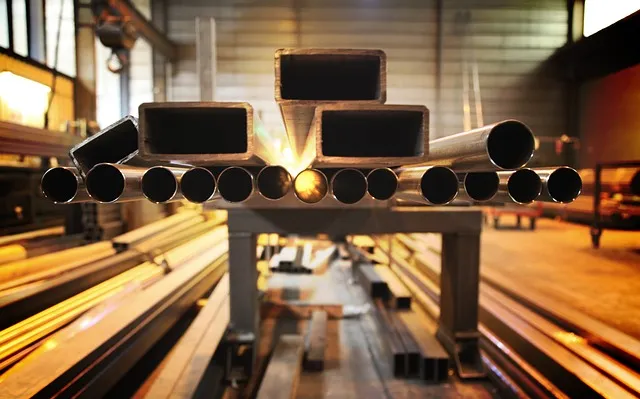
321 grade stainless steel tubes are a titanium-stabilized alloy widely recognized for their exceptional resistance to intergranular corrosion and high-temperature performance. Designed to endure harsh conditions, they are preferred in aerospace, chemical processing, and power generation industries. Their unique composition, which includes chromium, nickel, and titanium, ensures structural integrity even at temperatures as high as 870°C.
However, buying 321 stainless steel tubes requires more than a basic understanding of their properties. Several critical factors need attention, from evaluating the manufacturing standards to understanding their performance under specific conditions. Making an informed decision will maximize efficiency and minimize risks and costs in the long run. This guide explores nine essential aspects you should consider before purchasing 321 stainless steel tubes to ensure they meet your application’s requirements and deliver optimal performance in the long term.
Identifying the Specific Application
The intended use of 321 stainless steel tubes should guide your purchasing decision, as different industries require varying properties. For example, the aerospace industry needs lightweight, corrosion-resistant materials, while chemical processing demands resistance to acidic environments. Understanding the specific requirements of your application ensures you choose the right material. To achieve optimal performance, matching the tube’s characteristics with your needs is essential. Always review the 321 stainless steel tube specifications to ensure it meets the durability, strength, and resistance needed for your project’s success.
Verifying Compliance with Industry Standards
When investing in 321 stainless steel tubes, you must confirm that they comply with industry standards like ASTM A213, ASTM A269, or ASME SA213. Compliance guarantees that the material meets the required mechanical and chemical properties for safe and reliable use. Certificates of conformity provided by reputable manufacturers are crucial in verifying the quality and adherence to these standards.
Evaluating the Manufacturer’s Reputation
Not all manufacturers produce stainless steel tubes of the same quality. Researching the reputation of potential suppliers is vital. Look for manufacturers with a proven track record, positive reviews, and certifications from recognized bodies. Reliable manufacturers often provide detailed product documentation and after-sales support, ensuring you get a product that meets your expectations.
Analyzing the Tube’s Dimensions and Tolerances
The dimensions of 321 stainless steel tubes, such as wall thickness, diameter, and length, play a significant role in their performance. Ensure the tubes match the required tolerances for your application to avoid compatibility issues. For high-pressure environments, selecting tubes with appropriate wall thickness is critical to prevent failures and ensure operational safety.
Considering the Welding and Fabrication Requirements
If your project involves welding or fabrication, you need to know how 321 stainless steel tubes behave during these processes. The titanium in the alloy improves weldability, reducing the risk of carbide precipitation and intergranular corrosion. However, using the correct welding techniques and filler materials is crucial to maintaining the tube’s properties. Consult with your supplier or a welding expert for guidance.
Assessing Corrosion Resistance
321 stainless steel offers excellent resistance to corrosion in a wide range of environments, including oxidizing and moderately reducing conditions. However, its performance can vary depending on the specific environment and exposure to chemicals. If the tubes will be exposed to highly corrosive substances, you may need additional coatings or alternative materials to ensure long-term durability.
Reviewing the Heat Resistance Capabilities
One of the standout features of 321 stainless steel is its exceptional ability to maintain strength and stability at elevated temperatures. This characteristic makes it ideal for high-heat applications such as exhaust systems, heat exchangers, and other thermal environments. Before purchasing, it’s crucial to confirm the specific operating temperature range to ensure the material can withstand thermal cycling without compromising its structural integrity or performance over time. This ensures long-lasting durability and reliability in demanding conditions.
Comparing Costs Without Compromising Quality
Cost is an important factor when purchasing 321 stainless steel tubes, but it should not come at the expense of quality. While lower-priced options may seem attractive, they often lack the durability and performance needed for demanding applications. Instead, focus on finding a supplier that offers competitive pricing without compromising the quality and standards of their products.
Ensuring Availability and Timely Delivery
The availability of 321 stainless steel tubes plays a crucial role in meeting project timelines. Delays in procurement can lead to costly disruptions and project setbacks. To avoid such issues, partnering with a reliable supplier who maintains a well-stocked inventory and offers timely deliveries is essential. Furthermore, consider selecting a supplier capable of providing customized solutions to meet any unique specifications or project demands. This ensures that you receive the right materials on time without compromising quality or efficiency, ultimately keeping your project on track.
Conclusion
Purchasing 321 stainless steel tubes requires careful consideration of various factors to ensure you make the right choice for your specific application. By understanding the alloy’s properties, verifying compliance with industry standards, and selecting a reputable supplier, you can achieve optimal performance and long-term reliability. Always prioritize quality and ensure that the tubes meet the demands of your operational environment for a successful and cost-effective investment.
